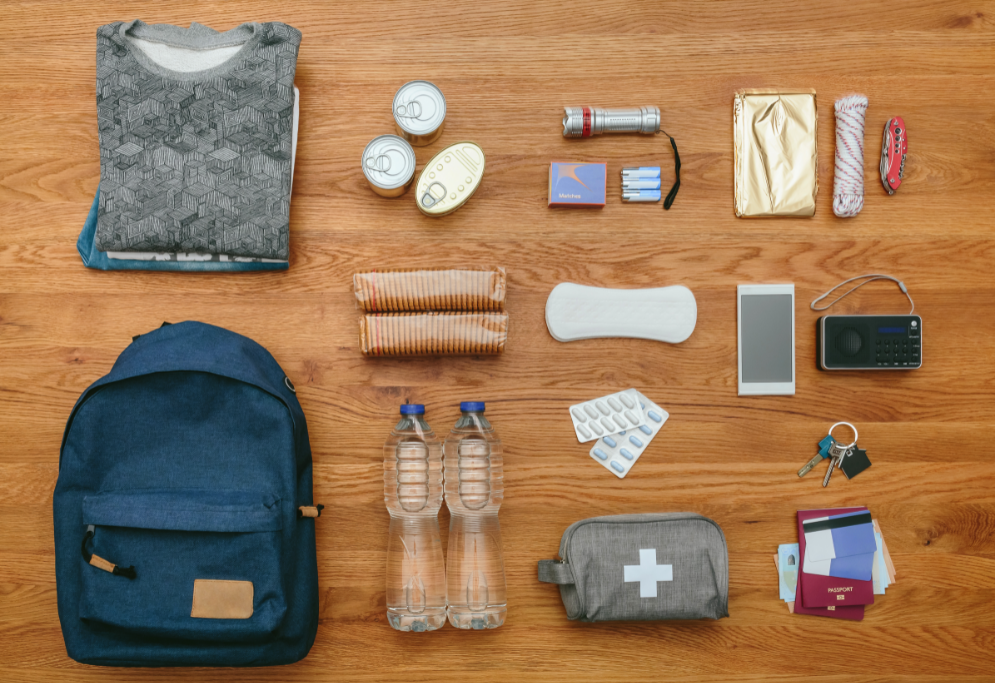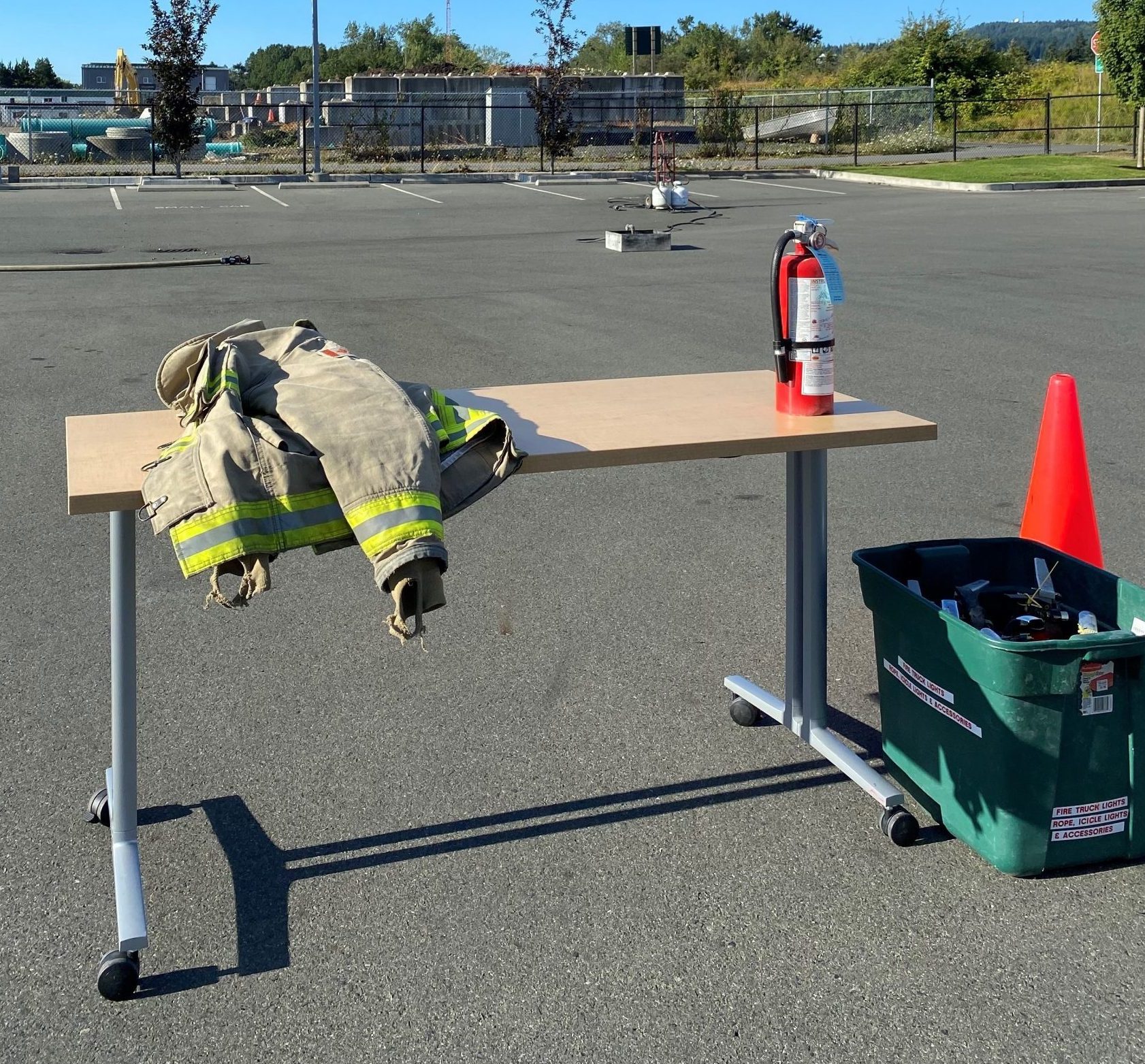You and your family should be prepared to be self-sufficient for at least seven (7) days after an emergency. Creating an emergency plan to reunite with your family, securing heavy items in your home, and building emergency kits and grab & go bags will all aid in your preparedness efforts.
Stay in the know. Register your phone number or email with Saanich Peninsula Alerts, so critical information will reach you during a disaster.
Emergency Plans
One of the most important things you can do is to plan how you will connect with your family in case of an emergency. An emergency can strike at any time, maybe while you are at home, work, school, driving or pursuing hobbies.
It is important to know where each family member will be, how you will communicate with each other and to have a reunification spot identified ahead of time. It is also important to know how to contact trusted information services.
For information on what the plan should include, expand the list below.
An emergency plan will help guide you and your family in case of an emergency. The plan should include:
- Places to stay in case you cannot access your home, like a friend or relative’s house, RV, boat or hotel.
- Two routes, that everyone knows, to the reunification spot from where they live, work and play.
- How you will communicate in case you and your family members are separated.
- Develop a “buddy” system with family, friends and neighbours to check on each other after an emergency. Telephones may not be working, so arrange check-ins with people who live near you.
- Contact people both in your local area and out-of-area.
- Safe exit routes from your home and work.
- Risks in the region
- Locations and proper use of important equipment such as fire extinguishers, gas and water valves, floor drain(s) and the electrical box.
- Those who may rely on you for assistance: children, family members with special considerations, and pets.
- Arrangement for care and evacuation of pets and farm animals, especially if you are away when disaster strikes.
- Health information, such as allergies, necessary medication, equipment, and contact details for doctor, pharmacy, and other important health providers.
- A list of important contacts, vital documents, and small valuables to take with you if you are evacuated.
- Insurance policies and photo or video documentation of home contents.
You may have special considerations during an emergency, such as vision, hearing, mobility, speech, language or understanding limitations. Your plan should include the things you may need to shelter in your home or away from your home.
Emergency Kits
Having essential supplies handy in an emergency is a vital part of preparedness. Prepare a home kit (also known as a shelter-in-place kit) that will support you and your family for at least seven days.
Have smaller versions of your kit accessible outside of your home because you may be at work, school or in your vehicle when an emergency occurs.
All emergency kits should include basic survival items like food, water, blankets, first aid materials, flashlights, a radio and batteries.
Following a disaster, you may need to:
- Stay at home (shelter in place) with an emergency kit or
- Leave immediately with a grab-and-go bag
Expand the links below to view what items should go in your kits.
Put supplies in one or two containers, such as plastic bins or duffel bags. Store them in an area of your home that’s easy to get to, such as a hall closet, spare room or garage.
Include items such as:
- Non-perishable food: aim for a one-week supply, with a manual can opener
- Water: four litres per person, per day for drinking and sanitation
- Phone charger, power bank or inverter
- Battery-powered or hand-crank radio
- Battery-powered or hand-crank flashlight
- Extra batteries
- First-aid kit and medications
- Personal toiletries and items, such as an extra pair of glasses or contact lenses
- Copy of your emergency plan
- Copies of important documents, such as insurance papers and identification
- Cash in small bills
- Garbage bags and moist towelettes for personal sanitation
- Seasonal clothing, sturdy footwear and emergency blanket
- Dust masks
- Whistle
- Help/OK Sign: Display the appropriate side outward in your window during a disaster. Visit the fire hall to pick up a hard copy.
A grab-and-go bag is a small emergency kit that’s easy to take with you, in case you need to leave right away. It’s a good idea to make grab-and-go bags for your home, workplace and vehicle.
Include items such as:
- Food (ready to eat) and water
- Phone charger and battery bank
- Small battery-powered or hand-crank radio
- Battery-powered or hand-crank flashlight
- Extra batteries
- Small first-aid kit and personal medications
- Personal toiletries and items, such as an extra pair of glasses or contact lenses
- Copy of your emergency plan
- Copies of important documents, such as insurance papers and identification
- Cash in small bills
- Local map with your family meeting place identified
- Seasonal clothing and an emergency blanket
- Pen and notepad
- Whistle
Emergency Management staff are passionate about educating our community to be as resilient as possible. In support of this initiative, Fire Department staff will deliver emergency preparedness presentations to give you and your group the resources you need to be prepared before, during, and after an emergency.
Learn more on our Public Education page.
Sidney Fire Department
Sidney Community Safety Building
Address: 2245 Oakville Avenue, Sidney BC V8L 1V6

